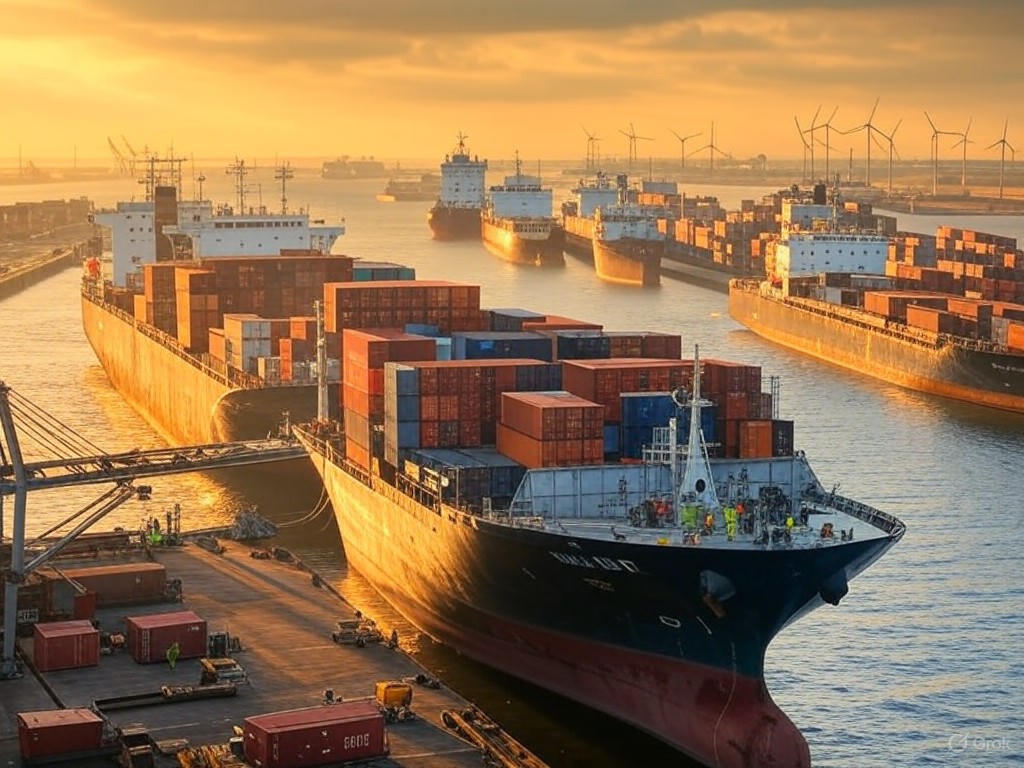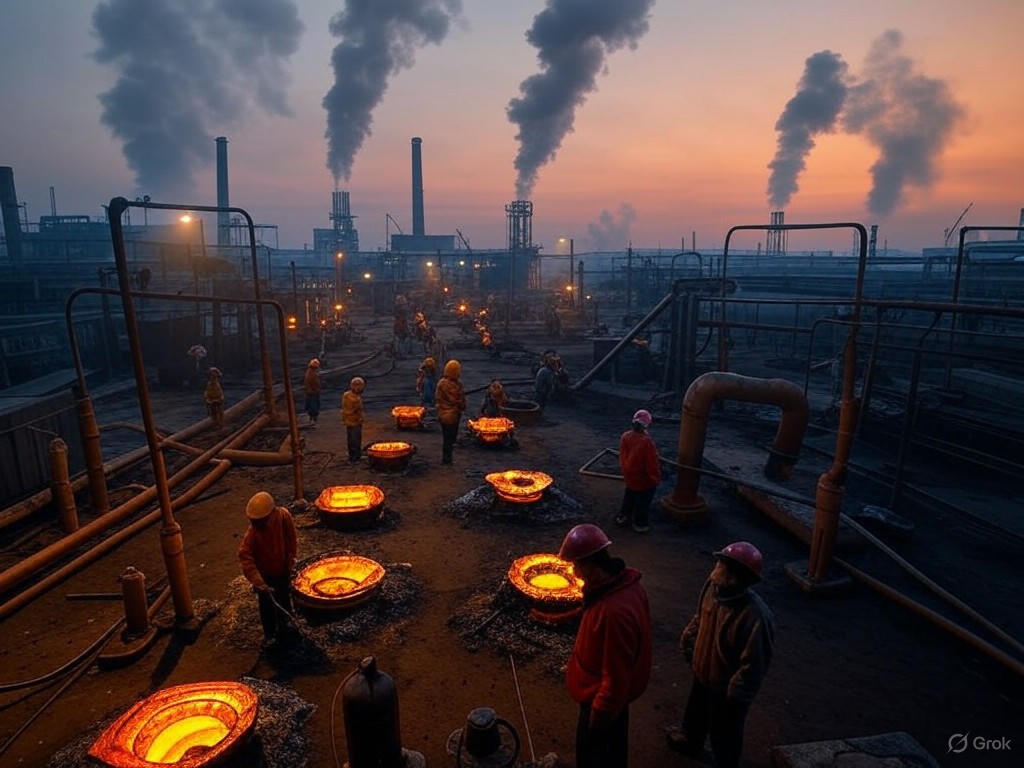EU’s Carbon Border Tax: A Game-Changer for Global Trade?
In an era where environmental concerns increasingly intersect with economic realities, the European Union's Carbon Border Adjustment Mechanism (CBAM) stands as a bold experiment in policy innovation. Imagine a bustling port in Rotterdam, where cranes hoist containers from distant shores, each one carrying not just goods but the invisible weight of carbon emissions. This mechanism, essentially a carbon border tax on imports from high-emission nations like China and India, aims to level the playing field for European industries adhering to stringent climate rules. Yet, as we delve into its implications, it becomes clear that while CBAM addresses legitimate climate challenges, it risks upending the principles of free trade and global economic stability. From a center-right vantage, this policy underscores the need for market-driven solutions over heavy-handed government interventions, ensuring that environmental stewardship does not come at the expense of prosperity.
The Mechanics of CBAM: A Tool for Climate Enforcement
At its core, the EU's CBAM is designed to prevent "carbon leakage"—the phenomenon where businesses relocate production to countries with laxer environmental standards to avoid Europe's tough emissions caps. Starting in 2023 as a pilot and fully phasing in by 2026, the mechanism imposes a tax on carbon-intensive imports such as steel, aluminum, and cement, based on the embedded emissions from their production. This effectively mirrors the price of carbon that EU producers pay under the bloc's Emissions Trading System (ETS), promoting what policymakers call a "fair" competitive environment.
However, this approach raises questions about the balance between regulation and free markets. Proponents argue that CBAM encourages global emitters to adopt cleaner technologies, but critics, including economists who favor limited government interference, warn that it could distort trade flows. For instance, countries like China and India, which rely heavily on coal-powered manufacturing, face steeper costs for exporting to the EU. According to a Wall Street Journal analysis, CBAM could add up to 20–30% to the price of certain goods from these nations, potentially slowing their economic growth and prompting retaliatory measures.
This policy shift is not without precedent. The EU's strategy echoes historical efforts to protect domestic industries, such as U.S. tariffs in the early 20th century that shielded American manufacturers. Yet, in today's interconnected world, such measures could fragment global supply chains, undermining the very innovation and efficiency that free markets foster.  "A bustling EU port, where incoming cargo from high-emission countries now faces the scrutiny of the Carbon Border Adjustment Mechanism, highlighting the tension between trade and environmental policy."
"A bustling EU port, where incoming cargo from high-emission countries now faces the scrutiny of the Carbon Border Adjustment Mechanism, highlighting the tension between trade and environmental policy."
Analyzing the Global Trade Ripple Effects
The introduction of CBAM is reshaping international trade dynamics in profound ways, particularly for emerging economies. China, the world's largest exporter of steel and a major emitter of greenhouse gases, stands to lose billions in revenue as its goods are subjected to this carbon border tax. Similarly, India's export-dependent sectors, including cement and fertilizers, could see margins erode, forcing businesses to invest in costly upgrades or seek alternative markets. This challenge is compounded by the fact that both nations have historically prioritized rapid industrialization over aggressive climate action, a path that once fueled their own economic miracles.
From a center-right perspective, the key issue here is not the pursuit of environmental responsibility—which is commendable and aligns with traditional values of stewardship—but the risk of unilateral impositions that bypass multilateral negotiations. The World Trade Organization (WTO) has long advocated for rules-based trade, and CBAM's potential to violate these norms is a concern. A WTO report highlights how such mechanisms could lead to trade disputes, as seen in recent cases where the U.S. and EU clashed over subsidies. Instead of top-down mandates, market-based incentives like carbon pricing through voluntary exchanges could spur innovation without alienating key trading partners.
Evidence from recent economic studies supports a more nuanced view. For example, a Financial Times investigation estimates that CBAM might reduce global emissions by up to 1–2% by 2030, but at a cost: It could slow GDP growth in affected countries by 0.5–1.5%. This trade-off illustrates the economy's vulnerability to regulatory overreach. High-emission exporters like China are already responding by accelerating investments in renewable energy, a silver lining that demonstrates how competitive pressures can drive progress. Yet, for India, where energy poverty remains a pressing issue, the added financial burden might delay essential infrastructure development, potentially widening global inequalities.
Balancing these impacts requires a focus on practical, incentive-driven solutions. Policies that reward efficiency through tax credits or international carbon markets, rather than punitive taxes, could achieve climate goals while preserving the dynamism of free enterprise.  "Smoke stacks at a Chinese steel plant, emblematic of the high-emission industries now under pressure from the EU's carbon border tax, underscoring the need for adaptive, market-oriented reforms."
"Smoke stacks at a Chinese steel plant, emblematic of the high-emission industries now under pressure from the EU's carbon border tax, underscoring the need for adaptive, market-oriented reforms."
Evidence and the Path Forward: Weighing Costs and Benefits
To fully grasp CBAM's ramifications, consider the data. The EU's own projections, as outlined in a European Commission policy brief, suggest that the mechanism will generate approximately €14 billion in revenue by 2030, which could fund green initiatives within the bloc. However, this comes at the expense of global partners. A study from the Cato Institute, a think tank emphasizing limited government, argues that such policies might inadvertently increase global emissions if countries divert trade to less regulated markets, like those in Southeast Asia.
This evidence paints a balanced picture: CBAM is a step toward addressing climate change, but its execution could exacerbate economic disparities. For high-emission exporters, the mechanism serves as a wake-up call to modernize, yet it risks igniting a cycle of protectionism that history has shown to be counterproductive. In the 1930s, for instance, the U.S. Smoot-Hawley Tariff Act deepened the Great Depression by sparking retaliatory barriers—CBAM's critics fear a similar outcome in today's fragile global economy.
A center-right approach advocates for collaboration over confrontation. Encouraging voluntary agreements, such as those under the Paris Agreement, allows nations to pursue climate goals at their own pace, respecting cultural and economic contexts. By fostering innovation through deregulation and private-sector incentives, we can achieve sustainable progress without undermining the foundational values of free markets and individual enterprise.
Conclusion: Toward a Balanced Environmental Future
As the EU's Carbon Border Adjustment Mechanism takes hold, it forces a reckoning on how we balance the urgent demands of climate change with the enduring principles of global trade and economic freedom. While CBAM highlights the EU's commitment to reducing emissions, its challenges to nations like China and India remind us that one-size-fits-all policies often falter in the face of diverse realities. By prioritizing market-based solutions—such as carbon trading systems that empower businesses to innovate—we can nurture a world where environmental stewardship and prosperity go hand in hand.
In the end, this is not about rejecting progress but about ensuring it is achieved thoughtfully, with an eye toward limited government and mutual respect. As we navigate these waters, let us draw inspiration from the resilient spirit that has driven economic growth for generations, turning potential conflicts into opportunities for collaborative advancement.  "A detailed map of global trade routes overlaid with carbon emission hotspots, visualizing the complex interplay between international commerce and climate policy under CBAM."
"A detailed map of global trade routes overlaid with carbon emission hotspots, visualizing the complex interplay between international commerce and climate policy under CBAM."

